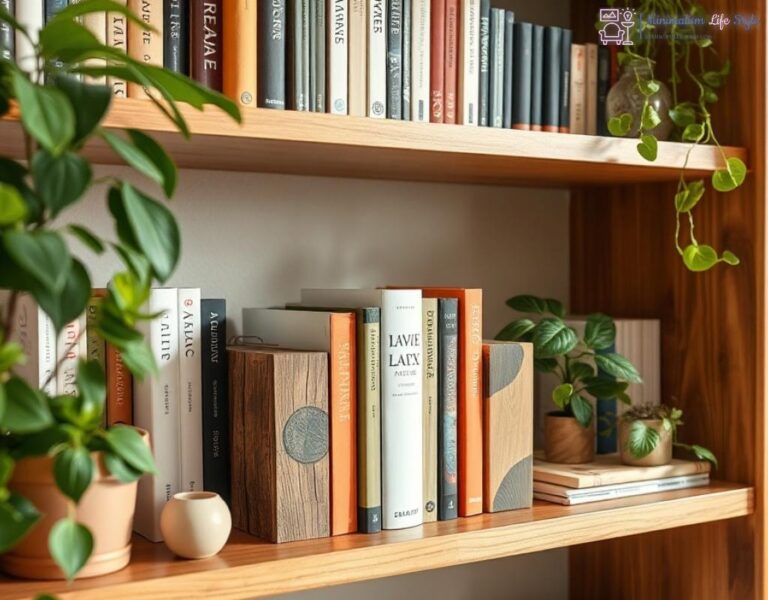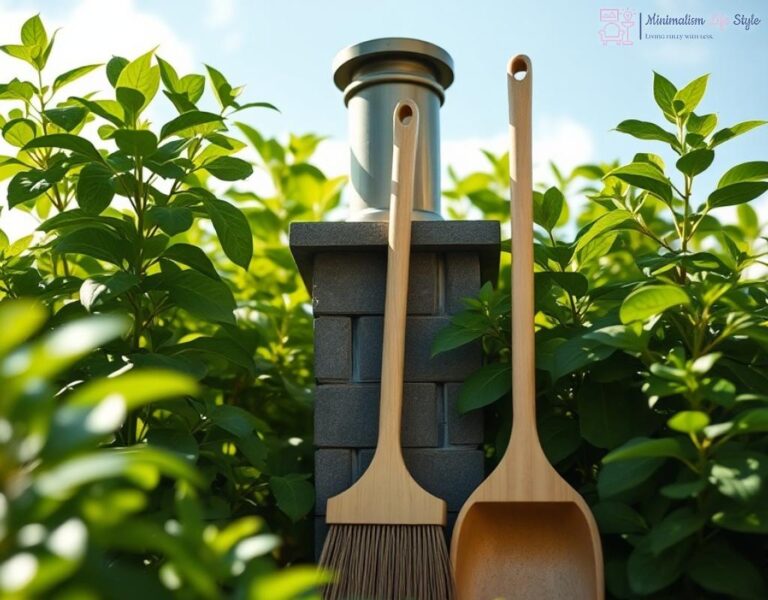Streamlined Gutter Designs for Natural Flow

Embracing Nature with Innovative Gutter Solutions
When it comes to maintaining a sustainable home, the importance of efficient gutter systems cannot be overstated. Traditional gutters often lead to water pooling and increased maintenance needs, resulting in a higher environmental impact. By adopting streamlined gutter designs, homeowners can not only enhance the aesthetic appeal of their properties but also promote natural water flow and minimize ecological disruption.
Design Principles for Eco-Conscious Gutters
Streamlined gutter systems are designed with both form and function in mind. These innovative structures facilitate the natural flow of rainwater while reducing the risk of clogs and overflows. Here are some key design principles that embody eco-friendliness:
- Gravity-Driven Flow: Utilizing the natural slope of roofs ensures that water flows seamlessly into gutters, eliminating the need for pumps or complex systems.
- Permeable Materials: Incorporating materials like perforated metals or eco-friendly composites allows for better drainage and reduces water runoff.
- Minimalist Aesthetics: Simple, clean lines not only look great but also reduce material waste and maintenance efforts.
Comparing Traditional vs. Streamlined Gutter Systems
To fully grasp the benefits of minimalist gutter designs, it’s essential to compare them with traditional systems. The following table highlights significant differences:
| Feature | Traditional Gutters | Streamlined Gutters |
|---|---|---|
| Water Flow | Often obstructed, requiring frequent cleaning | Optimized for natural drainage |
| Material Waste | Excessive due to complex designs | Minimalist, using fewer resources |
| Aesthetic Appeal | Can be bulky and unsightly | Sleek and modern appearance |
| Environmental Impact | Higher due to increased maintenance | Lower, promoting natural ecosystems |
By understanding these differences, homeowners can make informed decisions that align with their eco-conscious values, ultimately leading to a more sustainable living environment.
Eco-Conscious Cleaning Techniques for Gutters
In the pursuit of sustainable living, eco-conscious cleaning techniques for gutters play a pivotal role in maintaining both the functionality of the system and the overall health of the environment. By embracing these innovative methods, homeowners can ensure that their gutter systems operate efficiently while minimizing their ecological footprint. This approach not only protects the home but also supports the surrounding ecosystem.
One of the most effective cleaning techniques is the use of natural cleaning solutions. Unlike harsh chemicals that can pollute runoff water and harm local wildlife, eco-friendly alternatives such as vinegar, baking soda, and biodegradable soaps can effectively break down debris and grime. These substances are not only less damaging to the environment but are also safe for pets and plants. By incorporating these natural ingredients into a regular cleaning regimen, homeowners can achieve a thorough clean without compromising their commitment to sustainability.
Harnessing Nature’s Help
Another innovative strategy involves utilizing natural elements to assist in gutter maintenance. For instance, installing birdhouses or bat boxes nearby can encourage these creatures to take up residence, helping to manage pest populations that might otherwise contribute to gutter clogs. Additionally, planting trees and shrubs strategically around the home can enhance the aesthetic appeal while also capturing excess rainfall through their root systems, reducing the burden on gutters.
Embracing Technology for Efficiency
Advancements in technology have also paved the way for smart gutter systems, which enable homeowners to monitor their gutters from anywhere. These systems can alert users when maintenance is needed, ensuring that cleaning is performed at optimal times. By leveraging modern technology, homeowners can take a proactive approach to gutter maintenance, reducing the frequency of physical cleaning while also ensuring that the gutters function efficiently.
In conclusion, adopting eco-conscious cleaning techniques not only promotes sustainable living but also enhances the durability and performance of gutter systems. By utilizing natural cleaning solutions, enlisting the help of wildlife, and embracing technology, homeowners can significantly reduce their environmental impact while enjoying a well-maintained home.
Rainwater Harvesting: A Sustainable Gutter Solution
As the need for sustainable living practices becomes increasingly urgent, rainwater harvesting has emerged as a viable solution that aligns seamlessly with minimalist gutter maintenance. This innovative approach not only optimizes the function of gutter systems but also promotes efficient water management. By capturing and utilizing rainwater, homeowners can significantly reduce their reliance on municipal water supplies, thus lowering their environmental footprint and conserving a precious resource.
Leveraging Nature’s Bounty is at the heart of rainwater harvesting. With a well-designed gutter system, rainwater can be directed into storage tanks for later use. This practice not only ensures that your home has a supply of water for irrigation, washing, or even inside use, but also alleviates the pressure on local waterways during heavy rain events. By preventing runoff, rainwater harvesting contributes to the overall health of the local ecosystem, allowing for a more balanced and sustainable approach to water use.
The implementation of effective rainwater harvesting systems is relatively straightforward and can be adapted to suit different home designs. Homeowners can install diverters that channel rainwater from gutters into barrels or cisterns, ensuring that every drop is collected rather than wasted. This simple adaptation not only enhances the functionality of existing gutters but also transforms them into integral components of a sustainable living strategy.
Integrating rainwater harvesting with eco-conscious practices amplifies its benefits. By coupling this method with the previously discussed eco-friendly cleaning techniques, homeowners can maintain their gutter systems effectively while supporting the broader goal of sustainability. For instance, using natural cleaning agents ensures that the collected rainwater remains pure and suitable for various uses. Furthermore, maintaining clear gutters reduces the risk of overflow and maximizes the amount of rainwater that can be harvested.
In summary, rainwater harvesting stands out as a potent strategy for homeowners looking to enhance their green gutter maintenance practices. By capturing and reusing rainwater, not only do individuals contribute to a more sustainable environment, but they also create a self-sufficient water management system that aligns with minimalist principles.
Choosing Green Materials for Gutter Systems
In the quest for sustainability, the choice of materials for gutter systems plays a crucial role. As homeowners increasingly recognize the importance of eco-friendly living, selecting the right components for gutters can contribute significantly to environmental conservation. Through thoughtful material selection, homeowners can enhance the efficiency of their gutter systems while promoting a greener lifestyle.
Exploring Sustainable Material Options
When investing in gutters, it’s essential to explore materials that not only serve their functional purpose but also align with eco-conscious values. Here are some popular green materials to consider:
- Recycled Metals: Utilizing aluminum or steel that has been recycled reduces waste and energy consumption in production.
- Bamboo: As a highly renewable resource, bamboo is lightweight and strong, making it an innovative choice for eco-friendly gutter systems.
- Vinyl: Choose high-quality, recyclable vinyl that is free from harmful chemicals, ensuring durability and minimal environmental impact.
Prioritizing Durability and Longevity
In addition to being eco-friendly, the materials selected for gutters should prioritize durability. This not only reduces the need for frequent replacements but also minimizes the waste generated over time. Homeowners should look for materials that offer:
- Weather Resistance: Ensuring that gutters can withstand harsh weather conditions without deteriorating is vital for sustainability.
- Low Maintenance: Selecting materials that require minimal upkeep not only saves time but also conserves resources needed for repairs.
- End-of-Life Recyclability: Opt for materials that can be fully recycled at the end of their lifecycle, promoting a circular economy.
Integrating Aesthetics with Eco-Friendliness
The aesthetics of gutter systems shouldn’t be overlooked, as they contribute to the overall appeal of a home. By choosing materials that are both functional and visually pleasing, homeowners can achieve a harmonious balance between style and sustainability. For instance, opting for custom finishes or colors in recycled metals can add a modern touch while adhering to eco-friendly principles. Ultimately, the goal should be to create a gutter system that not only effectively manages water but also complements the home’s design.
Seasonal Maintenance Routines for Eco-Friendly Gutters
Embracing the Seasons for Optimal Gutter Health
As the seasons change, so too do the needs of your gutter system. Implementing a seasonal maintenance routine not only ensures the longevity of your gutters but also enhances their efficiency in managing water flow. By adopting eco-friendly practices during each season, homeowners can contribute to sustainable living while protecting their properties from water damage. This proactive approach allows for a seamless integration of nature into the gutter maintenance process.
Spring Awakening: The Time for Renewal
As winter thaws and spring arrives, it’s essential to shake off the remnants of the cold months. Spring cleaning your gutters is not just a chore; it’s a vital step in preparing for the heavy rains that often accompany the season. Here’s what to focus on:
- Debris Removal: Clear out leaves, twigs, and other debris that may have accumulated over winter. This ensures that rainwater flows freely.
- Inspection: Check for any signs of damage or wear. Look for rust, cracks, or loose connections that may need repair.
- Eco-Friendly Solutions: Use natural cleaning solutions, such as vinegar and baking soda, to cleanse the gutters without harming the environment.
Summer: Time for Preventive Care
With the warm weather comes a unique set of challenges for gutter maintenance. Utilizing the summer months for preventive care can significantly reduce the risk of issues during fall and winter. Here’s how to make the most of this season:
- Check for Plant Growth: Inspect for any overhanging branches or plants that may impede water flow. Trimming back foliage can prevent blockages.
- Monitor Water Flow: After summer storms, observe how well your gutters handle runoff. Any pooling or overflow could indicate a need for adjustments.
- Install Gutter Guards: Consider adding eco-friendly gutter guards to minimize debris accumulation and reduce cleaning efforts.
Fall Preparation: Anticipating Change
As leaves begin to fall, preparing your gutters for the upcoming winter is crucial. A well-maintained gutter system can prevent ice dams and water damage. Here’s a checklist for fall:
- Thorough Cleaning: Remove fallen leaves and debris to ensure smooth water flow during rain and snow.
- Final Inspection: Conduct one last check for any repairs needed before the cold sets in.
- Winter Readiness: Ensure all joints are sealed and secure to withstand winter’s harsh conditions.
Winter Watch: Keeping an Eye Out
During the winter months, while direct maintenance may be limited due to cold weather, vigilance is key. Here’s how to stay proactive:
- Monitor Ice Buildup: Keep an eye out for icicles or ice dams forming in your gutters, which can cause blockages and damage.
- Regular Checks: If safe to do so, periodically check your gutters for any signs of distress or damage.
By establishing a seasonal maintenance routine, homeowners can ensure their eco-friendly gutters remain functional and efficient. This not only safeguards your home but also supports a sustainable lifestyle, creating a harmonious balance between nature and architecture.




